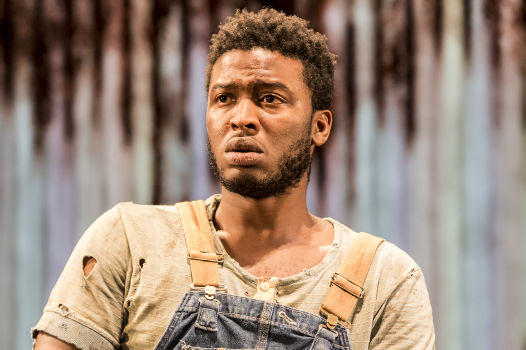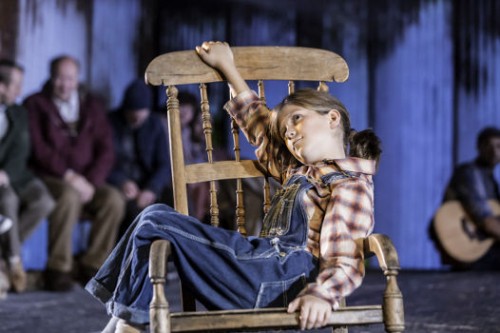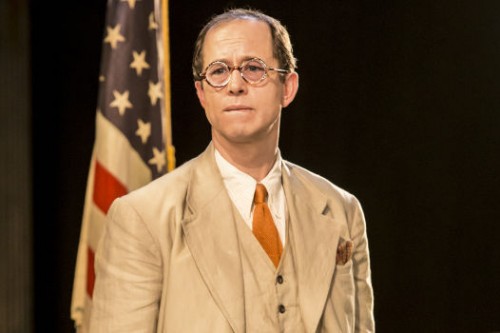Harper Lee’s timeless and universal novel on racial inequality and prejudice is adeptly adapted for the stage by Christopher Sergel and masterfully directed by Timothy Sheader. This epic piece starts with the breaking down of the fourth wall with actors placed within the audience reading from the classic text’s intro, setting the scene perfectly. To reinforce this a map of the town is chalked out on the stage floor that also includes a realistic tree with a child’s tyre swing.
The pretext is that Tom Robinson has been accused of rape and, as their guardian Atticus Finch is defending him, sees the loss of innocence for the three intelligent and inquisitive kids, Scout, Jem and Dill. Boo Radley is the reclusive neighbourhood bogeyman and, although we don’t see him till late on in the second act, is a scapegoat for things they don’t understand, despite Atticus’ plea for them to be non-judgemental.
Daniel Betts’ Atticus is carefully played out: stern, rational, moral and authoritative in his fight for justice and against prejudice and oppression. While equally an enlightened and even-handed father and guardian. He surprises the townsfolk with his sharp shooting when a mad dog runs amok, living up to his former nickname of One-shot Finch.
Quite abrasively the ‘nigger’ word is used throughout, and as ever language reveals a lot about its user’s mindset – in this case, one of bigotry and ignorance. When Atticus sets out to take a chair and lamp to the sheriff’s lock-up to protect his client from the lynch-mob it is the children, especially Scout, who shame the perpetrators to see the error of their ways.
The second act is set in the court room, though little change is needed to Jon Bausor’s adaptable set. The children are latecomers so have to stand in the ‘coloured’ balcony – a fact used by the prosecutor to label Atticus a ‘nigger-lover’. One of the main contentions of the defence is that Tom Robinson, lame in his left arm, would have been unable to land such blows on the face of the victim’s right side. It transpires that Bob Ewell is very much implicated in the case but, inevitably, this is literally a black and white case. Robinson is found guilty due to the colour of his skin with total disregard of the facts.
Atticus knew this all along but simply is fired to do the ‘right’ thing by standing up for the persecuted. This is well ahead of its time for the setting of deep south America in the 1930s, radical even at Harper Lee’s time of writing in the 50s. But justice comes in another way, which I won’t spoil by divulging, but even so we are left with a bittersweet feeling. This is a beautiful piece of theatre but disturbing at the same time, a salutary tale well told and in need of telling right now as we hear such rabid racism in the pre-election speeches (even if argued as economic theory). And great to see so many school parties to due to its place on the curriculum, great for both social and literary analysis.
24 March to 4 April, West Yorkshire Playhouse
Photos: Johan Persson


